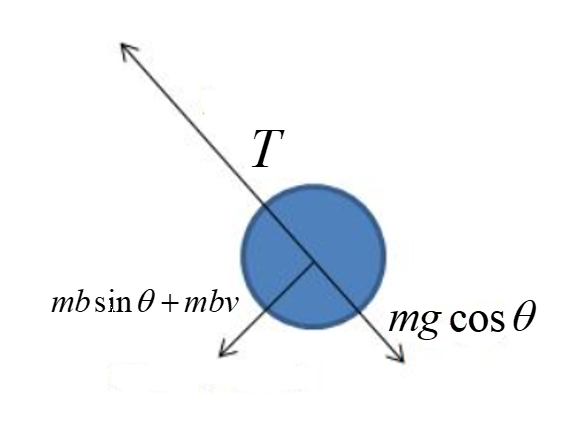Question
Question: If a simple pendulum has a significant amplitude (up to a factor of \(\dfrac{1}{e}\) of original) on...
If a simple pendulum has a significant amplitude (up to a factor of e1 of original) only in the period between t=0s to t=τs, then τ may be called as the average life of the pendulum. When the spherical bob of the pendulum suffers a retardation (due to viscous drag) proportional to its velocity, with b as the constant of proportionality, the average time of the pendulum is (assuming the damping is small):
Solution
To solve the given problem we can use the concept of motion; we can write the equation motion and if we differentiate the motion equation, we can get the answer.
Formula used:
The equation of motion:
⇒F=−kx−bv
Where v is the velocity.
Complete step by step answer:
We can try to solve the given problem.
Consider the equation of the motion for the simple pendulum suffering retardation, that is,
⇒F=−kx−bv
We can use the second-order differential equation is,
⇒mdt2d2x+kx+bdtdk=0
We can divide and multiply the term m. we get,
⇒dt2d2x+mkx+mbdtdx=0
Rearrange the terms according to the degrees of x. we get.
⇒dt2d2x+mbdtdx+mkx=0..........1
When we solve equation 1, we get the solution as x=eλt. We can differentiate this equation as,
⇒dtdx=λeλt
If we differentiate this again, we get,
⇒dt2d2x=λ2eλt
We can substitute the values in equation 1 we get,
⇒λ2eλt+mbλeλt+mkeλt=0
We can divide and multiply eλtwe get,
⇒λ2+mbλ+mk=0
The value for finding the λis,
⇒λ=2m−b±m2b2−4mk
We can divide and multiply the term m, we get,
⇒λ=2m−b±b2−4km
We can solve the equation 1 for x, we get,
⇒x=e2m−bt
On solving the equation, we get,
⇒Acos(ω02−λ2)
From this, we have the value for omega. That is,
⇒ω=ω02−λ2
Where ω0=mkand λ=2b
Therefore, the average life is given as
⇒λ1=b2
Hence the average time of the pendulum is b2.
This is the free body diagram that represents the simple pendulum values along with the directions.

Additional information:
When a point mass is attached to the light inextensible string and it is suspended from the fixed support is known as a simple pendulum. The Mean position is determined by the vertical line from the fixed support.
Note: There are some assumptions for calculating the time period. They are, there will be a negligible distance between the system and the air, the pendulum arm is not compressible, the swings of the pendulum are the perfect plane and the gravity remains always constant.
